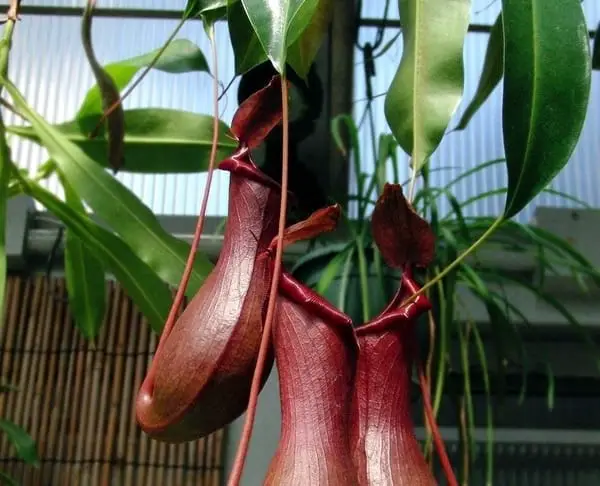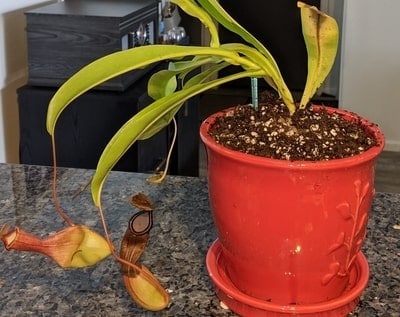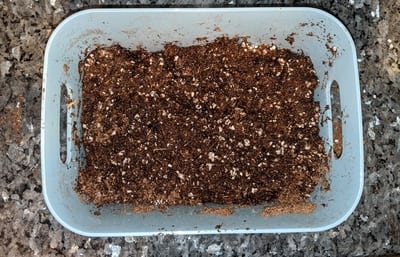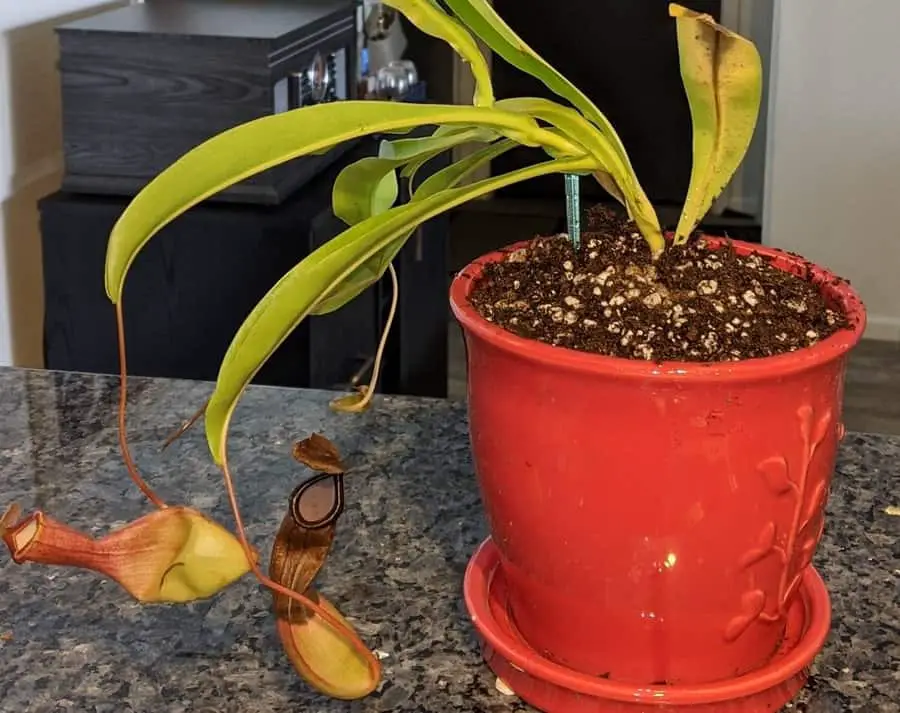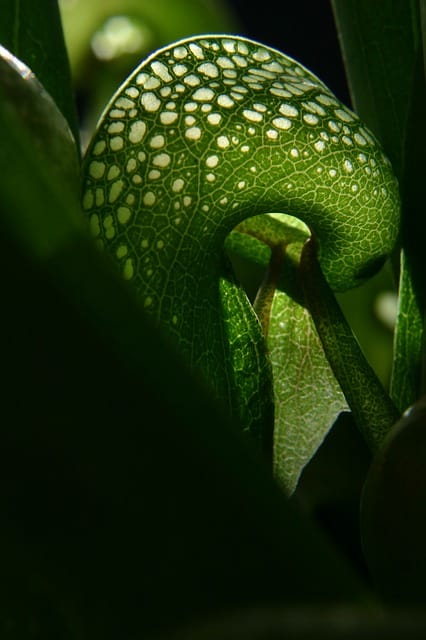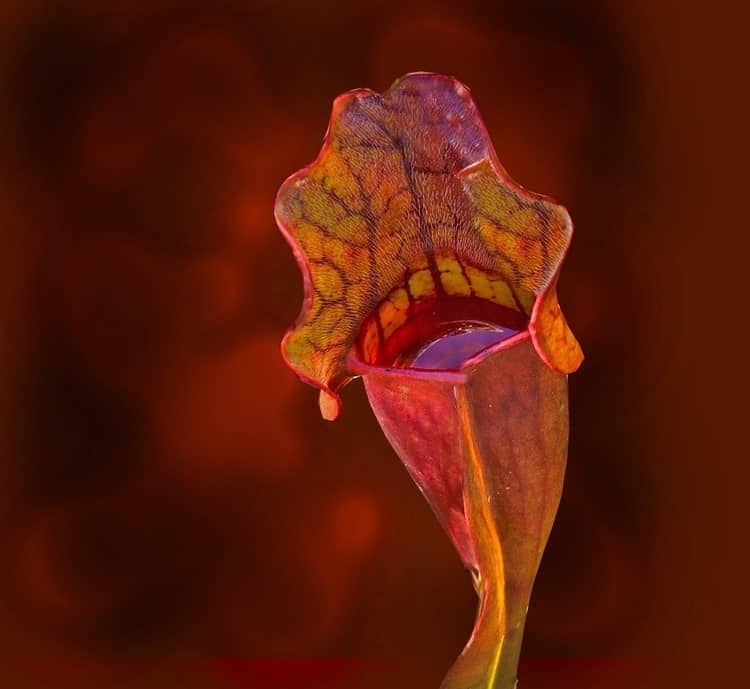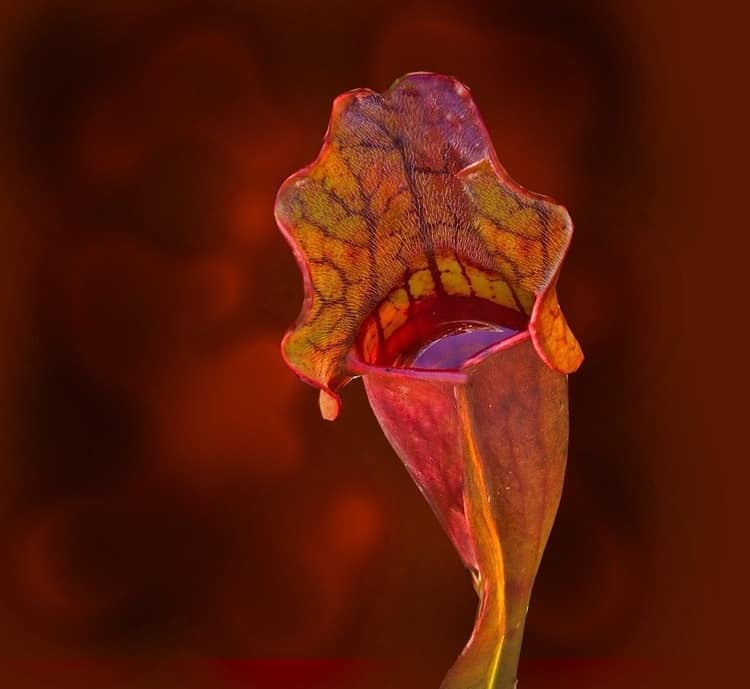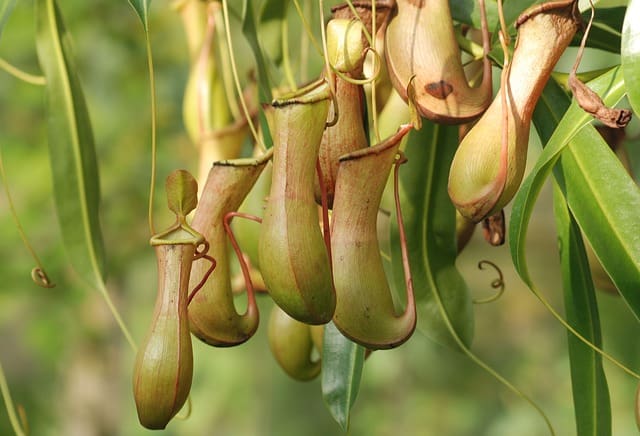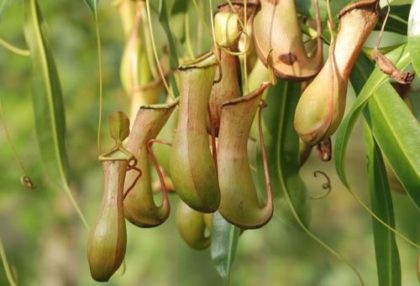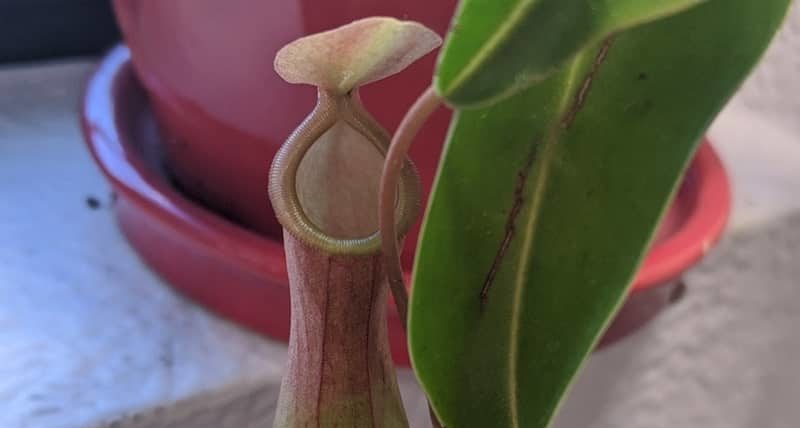Pitcher plants are grown in homes all over the world. Growing pitcher plants indoors is possible, but it can be a challenge due to their unique requirements.
Pitcher plants can grow in indoor locations where there is access to plenty of lighting, water, bugs, and above-average humidity levels. Most pitcher plants grow comfortably at room temperature, and only some varieties require dormancy.
This guide will guide you through the process of growing Pitcher plants indoors. Pitcher plants are sensitive to many elements and can die easily if the conditions are not optimal.
Pitcher Plant Indoor Care Guide
In this section, you will learn all the main considerations for growing Pitcher plants indoors. After covering all of the main items, I have summarized them in a table at the end of the article. I grow healthy pitcher plants indoors and hope I can help you do the same with your plants!
Indoor Lighting Requirements for Pitcher Plants
Lighting is an essential requirement for Pitcher plants. They need high amounts of light exposure to be healthy.
Pitcher plants need at least 10 hours of light every day. When Pitcher plants do not receive enough light, they weaken and can eventually die. When growing Pitcher plants indoors, you can opt for natural light, artificial light, or a combination of both.
Sunny window sills are optimal locations for Pitcher plants. But, these plants can live in windowless rooms as long as they receive enough lighting.
You can employ high output fluorescent lights or LED plant lights as artificial light sources. T8 bulbs are suitable fluorescent options. For LED options, choose 40-50 Watt LED lights. I have used this small LED plant light (which costs less than $30) to grow a Nepenthes plant indoors. You can follow the link to check the price on Amazon. It is a practical and inexpensive solution.
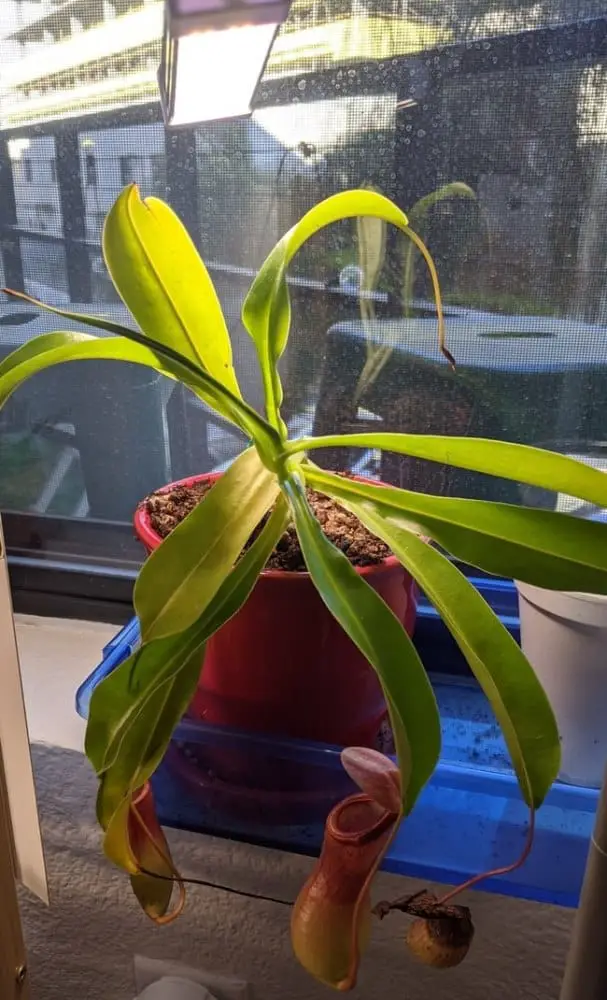
Soil for Pitcher Plants
In the wild, Pitcher plants grow in very poor soil. And they have developed an intolerance for nutrients. Pitcher plants nutritionless soil.
Employ a combination of long-fibered sphagnum moss or peat moss with perlite or sand as a growing medium for Pitcher plants. Each of the elements in the soil must be pure and lack nutrients and fertilizers.
When growing carnivorous plants indoors, I prefer to buy already made soil intead of bags of potting media due to the limited space. I shop for carnivorous plant soil on Etsy, online nurseries, or Amazon. 1 quart of soil is enough for multiple pots.
If you want to make your own soil, here are a few examples of suitable soil recipes:
- 4:1 or 3:1 or 2:1 ratio of peat moss and perlite
- 4:1 or 3:1 or 2:1 ratio of peat moss and silica sand
- 4:1 or 3:1 or 2:1 ratio of sphagnum moss and perlite
- 4:1 or 3:1 or 2: 1 ratio of sphagnum moss and silica sand
Watering Pitcher Plants Indoors
Watering pitcher plants is a vital process. Pitcher plants require high amounts of water. They do not like to live in standing water; the soil should continuously drain excess moisture.
While growing Pitcher Plants indoors or outdoor, the soil must remain humid at all times.
If you water pitcher plants from the top, water thoroughly until the soil is humid all around (but not flooded). Once the ground is slightly less humid, water again.
When watering Pitcher plants, only employ distilled water, reverse osmosis water o rainwater (here is a guide on how to water them to the perfect level). (here is a guide on how to water them to the perfect level).. The minerals in tap water or bottled water can kill Pitcher plants.
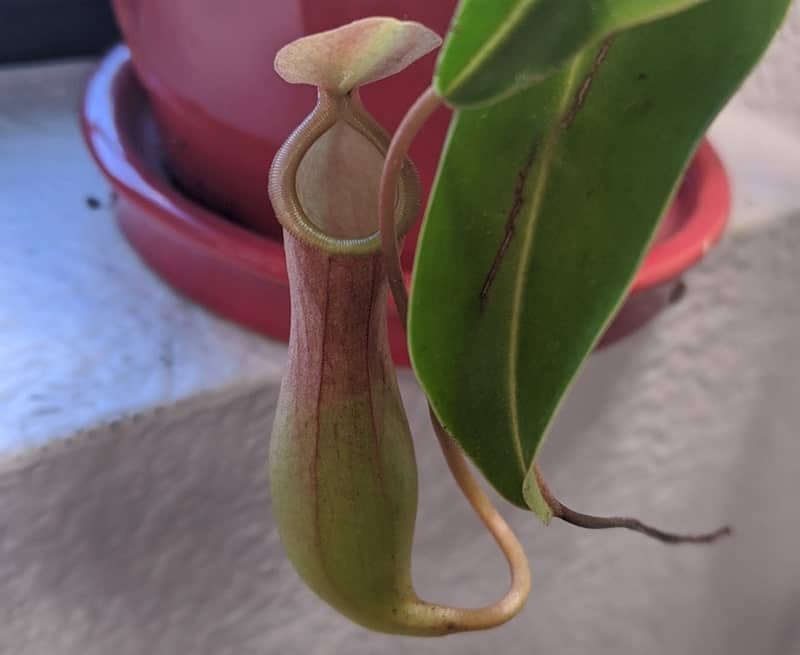
How to Feed Indoor Pitcher Plants
Outdoor Pitcher plants capture bugs on their own. When Pitcher plants grow indoors, they can capture some insects, but it depends on the availability.
Pitcher plants consume insects to supplement their diet. They do not need to consume bugs to survive, but they benefit from consuming them. Access to feed promotes growth and strengthen the plant.
I recommend feeding indoor Pitcher plants as a supplement. You can buy some food options for your plants, such as freeze-dried bloodworms, mealworms, flake fish food, or dried crickets in most pet stores. Or you could capture live bugs from a nearby garden.
Feed a Pitcher plant by dropping a bug inside the pitcher once every 2-4 weeks.
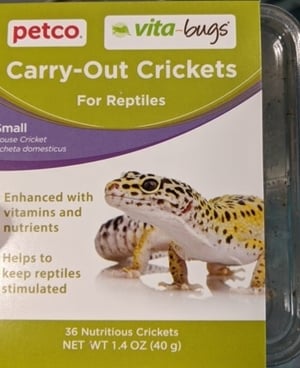
Pitcher Plant Dormancy
Some Pitcher plant varieties undergo a dormancy period. Dormancy is like hibernation. The plant goes to “sleep” during the winter and flourish in the spring.
Pitcher plants that require dormancy need exposure to cold weather during the winter months. Those plants need to be moved outdoors or to an unheated garage, porch, or windowsill during winter. Your plant won’t need sunlight during dormancy, but it will still need a good amount of water.
Tropical pitcher plants, also known as Nepenthes, do not require dormancy and are optimal for indoor locations. Since tropical pitcher plants do not need cold weather, they can be grown indoors year-round.
Pitcher Plant Temperature Requirements
Pitcher plants can withstand a wide range of temperatures. indoor room temperatures are appropriate to grow most varieties of Pitcher plants
A common temperature range during the growing season is 60 – 80 F (15 – 27 C). Pitcher plants prefer stable temperatures, which is a great fit for indoor locations. An associated challenge for growing Pitcher plants indoors is the humidity. The next section will give you the details.
Even though most Pitcher plants grow happily at room temperatures, you should double-check the specific species you own or plan to buy.
Humidity Requirements for Pitcher Plant
Pitcher plants benefit from a humid environment. They prefer moisture rather than dryness.
Indoors, especially in airconditioned areas, it can be a challenge to provide a humid environment for Pitcher plants. To go around this challenge, I employ a humidifier.
Place an electric humidifier in the room where your plant is located and run it consistently throughout the day or at least multiple hours every day. Growing pitcher plants in open terrariums to preserve the moisture is also a common practice.
Pitcher Plant Trimming
Trimming pitcher plants is straight forward. As the plant grows, some leaves will blacken as they wither.
Employ small scissors to trim any dead leaves. Be careful during trimming and do not damage new growth.
In the wild or outdoors, microorganisms can help decompose the dead leaves. Indoors, it could take years for the leaves to break up on their own. Make sure to trim your plant often to promote growth,
Pitcher Plants and Fertilizers
Pitcher plants do not need fertilizers to be healthy.
The nutrients and minerals in fertilizers can actually hurt the plant. Instead of fertilizing pitcher plants, it is best to focus on feeding them or ensuring the plant has plenty of access to prey.
Since indoor Pitcher plants tend to have less access to insects, make sure to feed the plant at least once every 2-4 weeks. Also, consider growing your plant in a hybrid location, such as a porch or a patio where the plant grows in a controlled environment but has access to bugs.
All the nutrients Pitcher plants need are obtained through capturing bugs. It is possible to fertilize these plants, but it is risky as fertilizers can burn pitcher plants. If you decide to employ fertilizer, make sure to employ a 1/10 dilution ratio.
Pitcher Plant Care Considerations Summary
The table below contains a summary of the most important care considerations for Pitcher plants. Some items contain specific information for indoor growing; others are more general.
| Care Consideration | Recommendation |
|---|---|
| Lighting: | More than 10 hours of light exposure through natural or artificial light. LED or fluorescent lights are suitable for indoor locations. |
| Watering: | Employ pure water sources such as distilled water, rainwater, or reverse osmosis water. Water constantly and keep the soil humid at all times. |
| Soil: | Do not employ enriched soil. Instead, employ nutrient-free carnivorous plant soil. Carnivorous plant soil can be made up of a mixture of peat moss or sphagnum moss and perlite or silica sand. The ratios are not critical. |
| Temperature: | Common temperature range during the growing season: 60 – 80 F (15 – 27 C) Room temperature is appropriate for most Pitcher plant varieties. |
| Humidity: | > 50% |
| Trimming: | Trim dead leaves to promote growth. |
| Feeding: | Outdoor Pitcher plants capture bugs on their own. Indoor Pitcher plants need to be fed at least once a month to supplement their diet. Food options: mealworms, bloodworms, crickets, flies, fish flakes, or other bugs. |
| Fertilizers: | Do not fertilize |
| Repotting: | Repotting is not critical, but a yearly repotting can promote growth. |
| Dormancy: | Some pitcher plant varieties require a yearly dormancy. Nephenthes varieties do not require dormancy. |
| Best indoor Pitcher plant varieties: | Due to their lack of dormancy, Tropical Pitcher plants are suited for indoor growing. |
For more information on pitcher plant care, you can read this article: A Complete Pitcher Plant Care Guide. It includes a downloadable care sheet! And it expands on care considerations for outdoor growing. The information can help you decide on the best strategy for outdoor vs. indoor growing.


